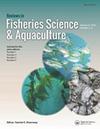Historical and Current Hatchery Programs and Management of Chum Salmon in Hokkaido, Northern Japan
引用次数: 39
Abstract
The hatchery program for chum salmon in Hokkaido, northern Japan, constitutes one of the largest salmon hatchery programs in the world. The hatchery program has been conducted for over 120 years, and returns of chum salmon rapidly increased during the last quarter of the 20th century. Since the 1990s, chum salmon returns to Hokkaido have remained at a historically high level, although different fluctuation trends have been observed among regions within Hokkaido. Although such intensive hatchery programs have been conducted for more than 25 generations, there has been no evidence indicating any decline of genetic diversity. The hatchery program for chum salmon in Hokkaido is successful in increasing commercial catches and will likely be the main management tool in future. However, information on naturally spawning chum salmon in Hokkaido remains scarce. Assessment of naturally spawning populations recently commenced, and it has been revealed that naturally spawning chum salmon populations remain in many rivers in Hokkaido. For future management, monitoring chum salmon of both hatchery and natural origin is important, and a novel strategy that accounts for the enhancement of commercial stocks and the coexistence of hatchery programs and wild populations should be established in Japan.日本北部北海道大马哈鱼的历史与现状孵育计划与管理
位于日本北部北海道的鲑鱼孵化场是世界上最大的鲑鱼孵化场之一。这个孵化场项目已经进行了120多年,在20世纪的最后25年里,鲑鱼的数量迅速增加。自1990年代以来,返回北海道的鲑鱼数量一直保持在历史最高水平,尽管在北海道各地区之间观察到不同的波动趋势。尽管这种密集的孵化项目已经进行了超过25代,但没有证据表明遗传多样性有任何下降。北海道的大马哈鱼孵化场计划成功地增加了商业捕捞量,并可能成为未来的主要管理工具。然而,关于北海道自然产卵的鲑鱼的信息仍然很少。最近开始了对自然产卵种群的评估,结果显示北海道的许多河流中仍有自然产卵的鲑鱼种群。对于未来的管理,监测孵化场和自然来源的大马哈鱼是重要的,并且应该在日本建立一种新的策略,以增加商业种群和孵化场计划与野生种群的共存。
本文章由计算机程序翻译,如有差异,请以英文原文为准。
求助全文
约1分钟内获得全文
求助全文

 求助内容:
求助内容: 应助结果提醒方式:
应助结果提醒方式:


